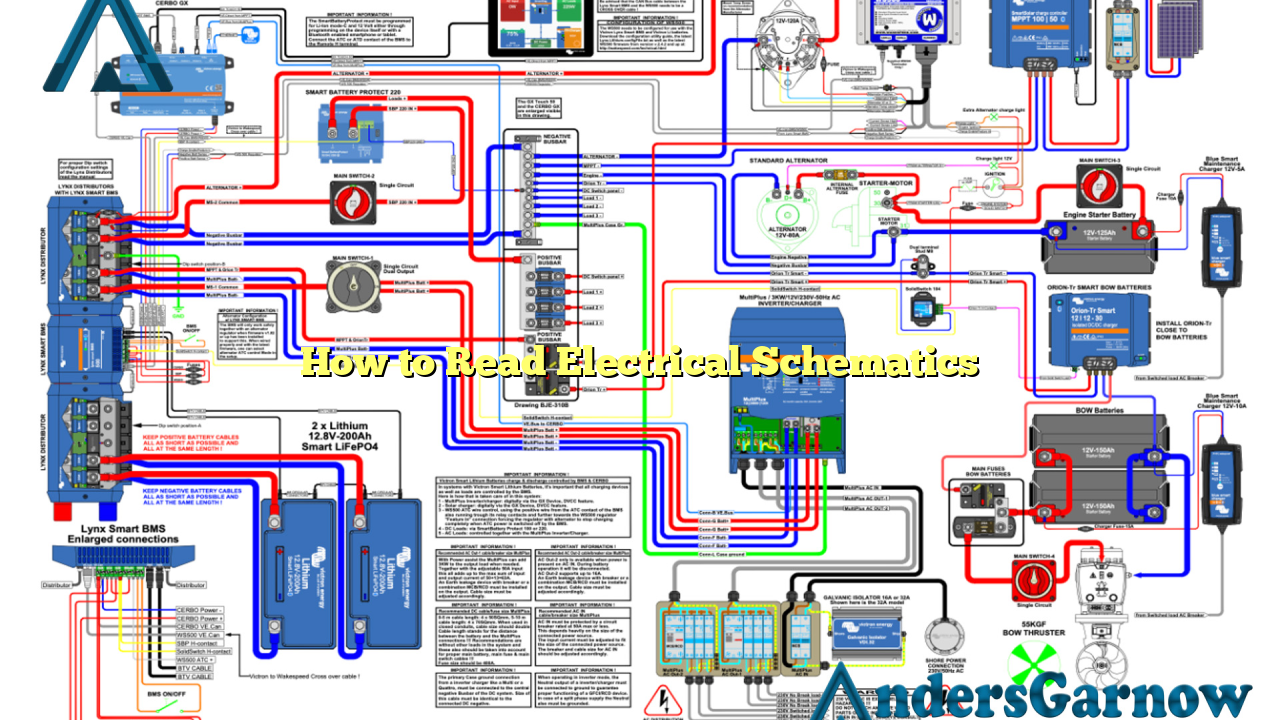Hello readers! In this article, we will delve into the world of electrical schematics and discuss how to read them effectively. Electrical schematics are essential diagrams that represent the electrical connections and functions of a system or device. Whether you are an aspiring electrician or simply interested in understanding electrical systems, this guide will provide you with the necessary knowledge to decipher these intricate diagrams. Let’s get started!
1. Understanding the Symbols
One of the key aspects of reading electrical schematics is understanding the various symbols used. These symbols represent different electrical components, such as resistors, capacitors, switches, and more. Familiarize yourself with the most common symbols to easily interpret the diagrams. You can find comprehensive symbol guides online or in electrical engineering textbooks.
2. Identifying the Power Source
Locating the power source is crucial as it helps you understand how electricity flows through the system. Typically, the power source is represented by a battery symbol or an AC/DC power supply symbol. Determine where the power enters the system and trace its path to comprehend the overall circuit design.
3. Analyzing the Connections
Electrical schematics consist of lines and arrows that depict the connections between different components. These connections indicate the flow of electrical current between components. Follow the lines and arrows to identify how the components are interconnected and understand the logical sequence of the circuit.
4. Examining Component Labels
Components in electrical schematics are often labeled with letters, numbers, or alphanumeric codes. These labels help identify the specific component and its function within the circuit. Refer to the schematic’s legend or accompanying documentation to decipher the labels and gain a better understanding of the circuit.
5. Understanding Component Functions
Each electrical component serves a specific function within a circuit. It is vital to understand the purpose of each component to comprehend the overall operation of the system. Research and familiarize yourself with the functions of common electrical components like resistors, capacitors, diodes, and transistors.
6. Following the Flow of Current
Electrical schematics provide a clear path for the flow of electrical current. By following this flow, you can understand how the current travels through the circuit and powers various components. Start from the power source and trace the path, noting any branches or deviations along the way.
7. Identifying Ground and Neutral Connections
Ground and neutral connections are crucial for safety and proper functioning of electrical systems. These connections are usually represented by specific symbols or labels in electrical schematics. Identify these connections to ensure correct wiring and prevent any potential hazards.
8. Reading Circuit Descriptions
In addition to the graphical representation of the circuit, electrical schematics often include written descriptions of the circuit’s operation. These descriptions provide further insights into the functionality of the system and help clarify any ambiguities in the diagram. Pay attention to these descriptions for a comprehensive understanding.
9. Using Multimeter and Testing Equipment
When reading electrical schematics, it is beneficial to have hands-on experience with testing equipment like multimeters. These tools allow you to verify the voltage, current, and resistance at various points in the circuit. By comparing the measured values with the expected values, you can validate your understanding of the schematic.
10. Practice and Patience
Reading electrical schematics is a skill that improves with practice and patience. Start with simple diagrams and gradually tackle more complex ones. With time, you will become more proficient in interpreting electrical schematics and be able to troubleshoot and analyze electrical systems efficiently.
While electrical schematics are the standard method of representing electrical connections, there are alternative ways to understand electrical systems:
1. Wiring Diagrams
Wiring diagrams provide a simplified visual representation of a system’s electrical connections. Unlike electrical schematics, wiring diagrams focus solely on the physical layout of wires and components, making them easier to comprehend for beginners.
2. Block Diagrams
Block diagrams are high-level representations of a system’s functionality. They use blocks to represent different components or subsystems and arrows to indicate the flow of signals or information. Block diagrams provide a broader understanding of the system’s overall operation without delving into intricate details.
3. Circuit Board Layouts
Circuit board layouts showcase the physical placement of components on a circuit board. By examining these layouts, you can gain insights into how components are connected and positioned, aiding in troubleshooting and repair.
| Question | Answer |
|---|---|
| What are the benefits of reading electrical schematics? | Reading electrical schematics allows you to understand how electrical systems function, troubleshoot issues, and effectively communicate with other professionals in the field. |
| Is it necessary to memorize all the electrical symbols? | While it is helpful to be familiar with the common electrical symbols, it is not necessary to memorize all of them. You can refer to symbol guides or documentation whenever needed. |
| Can I read electrical schematics without any prior electrical knowledge? | While prior electrical knowledge is beneficial, anyone can learn to read electrical schematics with dedication, practice, and a willingness to understand the concepts. |
| Are there any software tools available for reading electrical schematics? | Yes, several software tools are available that allow you to create and read electrical schematics digitally. Some popular options include AutoCAD Electrical, Eagle, and KiCad. |
In conclusion,
Reading electrical schematics is a valuable skill that empowers you to understand and work with complex electrical systems. By familiarizing yourself with the symbols, connections, and component functions, you can interpret these diagrams with ease. Remember to practice regularly and seek guidance when needed. Happy schematic reading!

